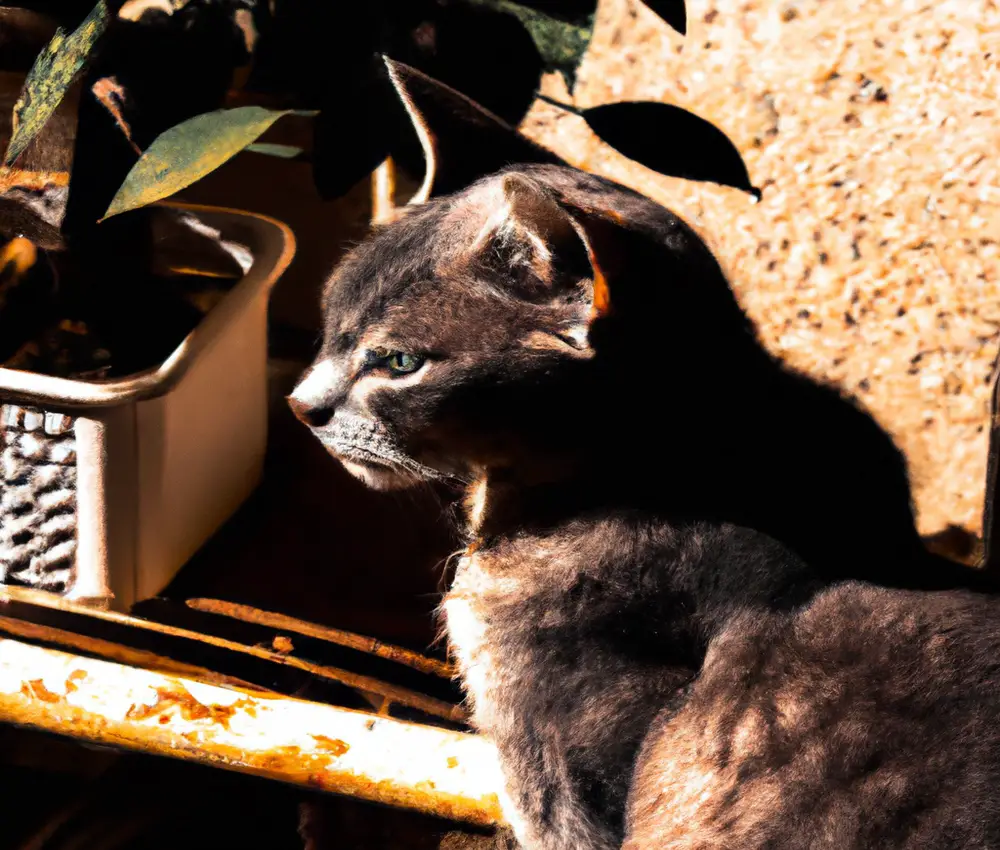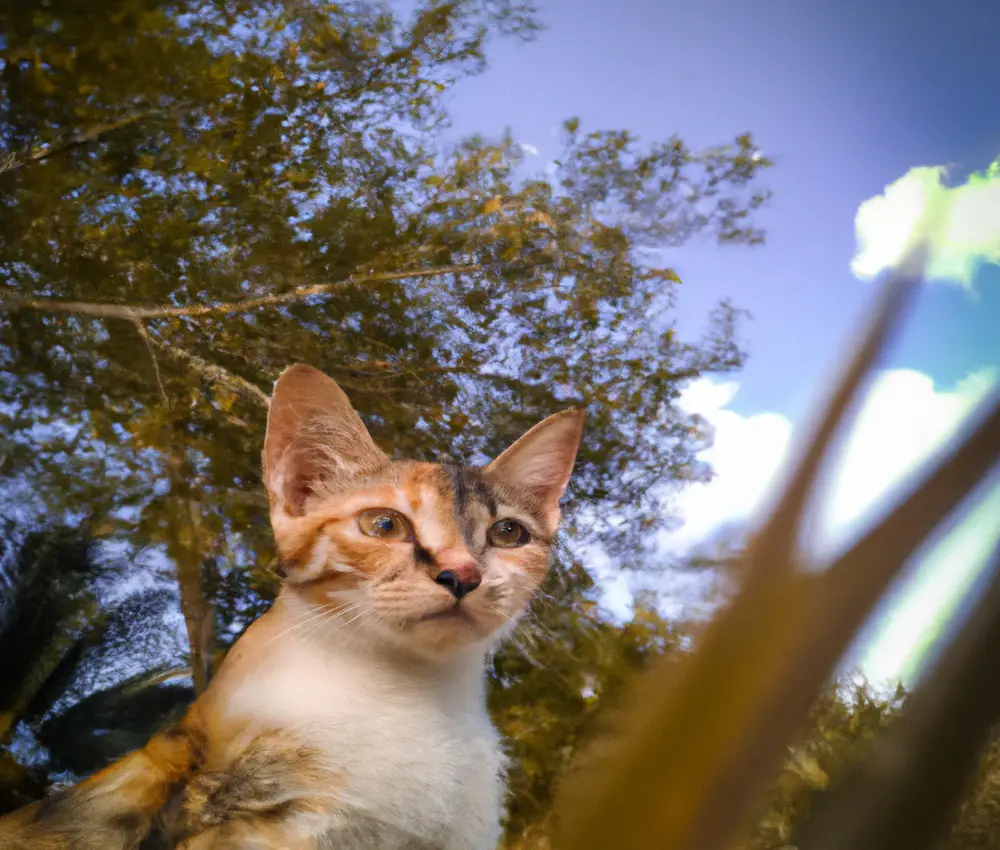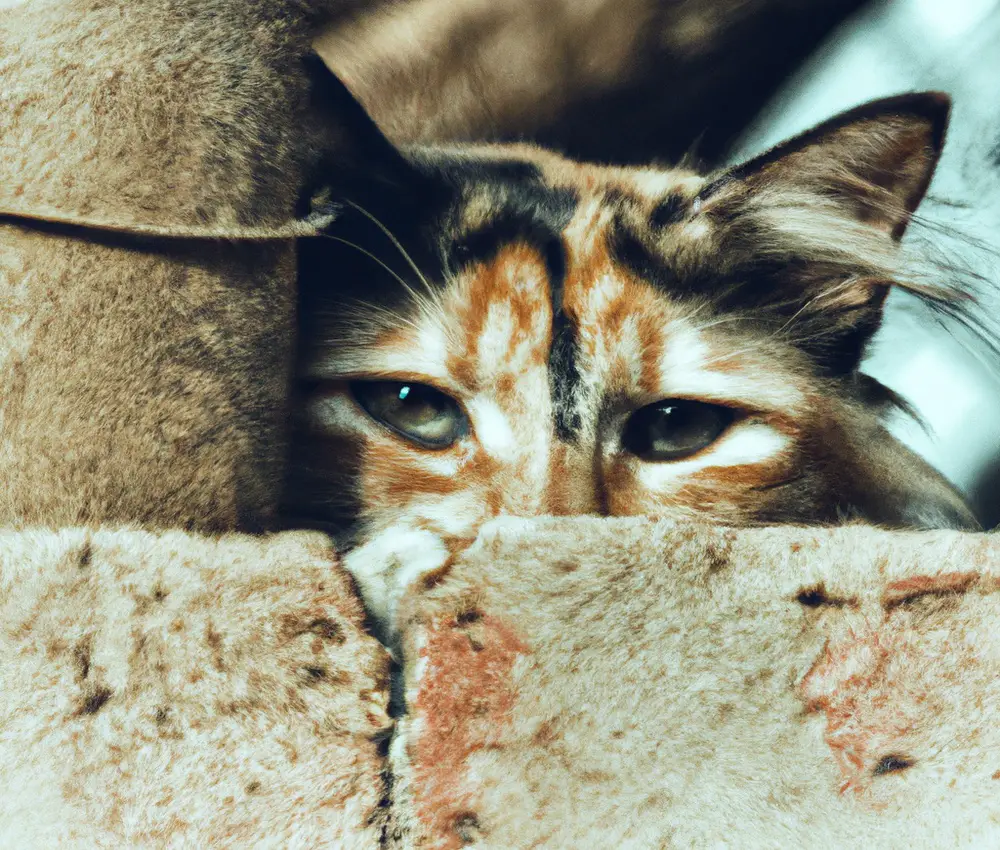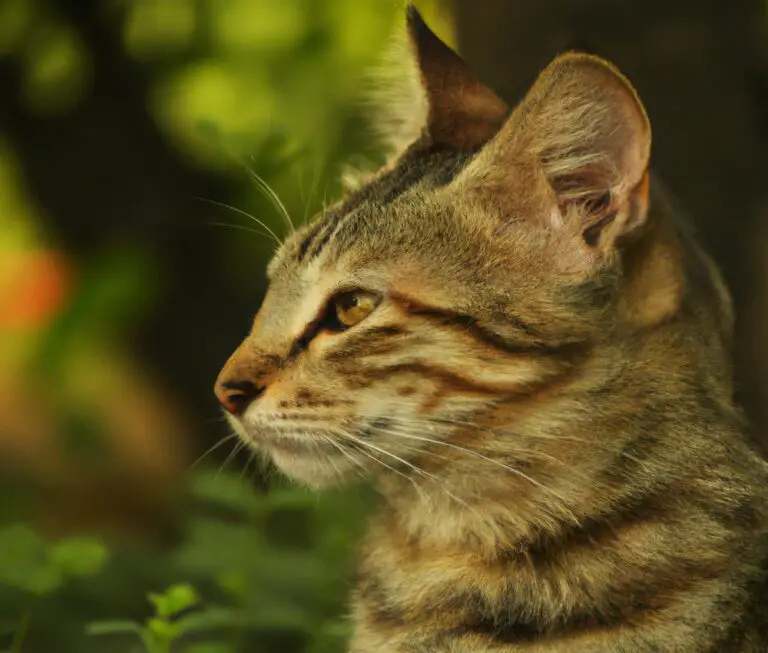Can a Cat Survive a 15-Foot Fall?
Key Takeaways:
- Cats have a remarkable ability to survive falls from great heights, including 15 feet.
- Their flexible bodies, quick reflexes, and natural instinct for self-preservation contribute to their survival.
- Even though they may sustain injuries, cats often recover relatively well from falls of this magnitude.
- It is always advisable to monitor and seek veterinary attention for a cat that has fallen from a significant height.
Picture this: your beloved feline friend perched on a windowsill, peering curiously at the world outside. Suddenly, a gust of wind startles them and they lose their footing.
Before you can react, they plunge 15 feet down, disappearing from view.
Panic sets in as you wonder, can a cat survive such a fall? As a veterinarian with years of experience, I can assure you that cats are astonishingly resilient creatures.
In this article, we’ll explore the incredible anatomy and survival instincts that help cats walk away from seemingly disastrous falls.
We’ll also discuss the factors that influence their chances of survival, common injuries to watch out for, and essential tips to help your cat safely navigate heights. So, let’s dive in and unravel the mysteries of feline survival!
| Yes | No | |
|---|---|---|
| Survival Rate | High | Low |
| Injury Risk | Lower | Higher |
| Ability to Land Safely | Yes | No |
Understanding a Cat’s Anatomy and Survival Instincts
Understanding a cat’s anatomy and survival instincts is crucial for determining whether a cat can survive a 15-foot fall. Let’s explore the remarkable flexibility of a cat’s skeleton, the role of its muscular body, and its lifesaving air righting reflex.
The Remarkable Flexibility of a Cat’s Skeleton
The flexibility of a cat’s skeleton is truly remarkable. It allows them to twist and contort their bodies in incredible ways.
Their spine is made up of many small bones called vertebrae, which give them the ability to arch, stretch, and curl up tightly.
This flexibility helps cats land on their feet when falling and also contributes to their agile movements. Additionally, cats have collarbones that are not connected to other bones, giving their shoulders more freedom of movement.
This unique skeletal structure enables cats to navigate narrow spaces and perform impressive acrobatic feats.

The Role of the Cat’s Muscular Body in Survival
A cat’s muscular body plays a crucial role in its survival.
Their strong muscles provide them with agility, power, and the ability to quickly escape danger.
Cats have a flexible spine and powerful hind legs that allow them to jump, climb, and pounce with precision and speed.
Their strong muscles also help them land safely, reducing the impact of falls.
Additionally, a cat’s muscular body aids in hunting and catching prey, ensuring their survival in the wild.
Cat’s Air Righting Reflex: A Lifesaving Mechanism
The cat’s air righting reflex is a remarkable survival mechanism. When a cat falls, it instinctively twists its body mid-air to land on its feet.
This reflex helps to minimize the impact of the fall and prevent serious injuries.
It’s important to note that the reflex is not foolproof, and falling from heights can still be dangerous for cats. However, the air righting reflex greatly increases their chances of surviving falls, even from considerable heights.
Factors Influencing Survival in High Falls
The height of the fall, the landing surface, and the cat’s age and physical condition all play a role in determining their survival in high falls.
Height of the Fall: Is 15 Feet a Significant Factor?
The height of a fall plays a significant role in determining a cat’s chances of survival. While 15 feet may not seem extreme, it can still lead to injuries.
Falls from this height can result in broken bones and other internal injuries.
However, cats are known to have a remarkable ability to land on their feet and absorb the impact. Nonetheless, it is crucial to seek veterinary attention after any fall, regardless of the height.
Landing Surface: The Impact on a Cat’s Survival
The landing surface plays a significant role in a cat’s survival after a fall. A cat has a better chance of surviving a fall if it lands on a soft surface, such as grass or carpet.
These surfaces can absorb some of the impact and reduce the risk of severe injuries.
On the other hand, landing on a hard surface, like concrete or asphalt, increases the chances of sustaining serious injuries or even death. So, providing a soft landing surface is crucial for improving a cat’s chances of survival.

Cat’s Age and Physical Condition: Determining Factors
The age and physical condition of a cat are crucial factors in determining its survival after a fall. Younger cats tend to have more flexibility and better muscle tone, making them more likely to escape serious injury.
Similarly, a cat that is in good overall health and has strong muscles and bones is more likely to withstand the impact of a fall.
Additionally, a cat’s instinctual ability to land on its feet helps decrease the likelihood of severe injuries. Older cats or cats with pre-existing health conditions may be more vulnerable to injuries from falls.
Injuries to Look Out For After a Fall
Look out for these common injuries in cats after a fall. Veterinary evaluation is crucial to detect silent injuries.
Common Injuries in Cat Falls
Cat falls can lead to various common injuries, including broken bones, fractures, and sprains.
Other injuries to look out for are contusions, lacerations, and puncture wounds.
Cats may also experience head trauma, such as concussions, when they fall.
Additionally, internal injuries like organ damage or internal bleeding can occur.
It’s important to observe your cat for signs of pain, limping, difficulty breathing, or changes in behavior after a fall.
If you suspect any injury, seek immediate veterinary care.

Silent Injuries: The Importance of Veterinary Evaluation
Silent injuries after a fall can be serious, which is why veterinary evaluation is important.
Cats can be adept at hiding pain, so a thorough examination is crucial.
A vet will check for internal injuries, broken bones, and potential complications, providing necessary treatment and pain management.
By seeking veterinary evaluation, you ensure your cat’s well-being and prevent long-term complications.
Remember, early detection and intervention are key to a successful recovery.
Tips to Help Your Cat Survive a Fall
Here are some helpful tips for increasing your cat’s chances of surviving a fall.
Creating a Safe Environment for Your Cat
Creating a safe environment for your cat is essential to ensure their well-being. Here are some tips:
- Secure your windows: Install sturdy screens or window guards to prevent your cat from accidentally falling out.
- Remove toxic plants: Some common plants, like lilies and aloe vera, are toxic to cats. Make sure to research which plants are safe and remove any potential hazards.
- Hide cords and wires: Cats love to chew on dangling cords, which can pose a serious risk. Use cord covers or keep them out of reach.
- Provide scratching posts: Cats need to scratch to stretch their muscles and maintain healthy claws. Offer them plenty of appropriate scratching surfaces to avoid damage to furniture.
- Keep cleaning supplies locked away: Household chemicals can be toxic to cats. Store cleaning products and other potentially harmful substances securely.
- Supervise outdoor time: If your cat enjoys going outside, ensure they are supervised and have access to a safe and enclosed area. Avoid busy streets or areas with potential hazards.
Creating a safe environment for your cat means minimizing risks and providing them with a secure and stimulating space to thrive.
Educating and Training Your Cat for Safe Heights
To educate and train your cat for safe heights, there are a few key things to keep in mind.
Firstly, provide sturdy and appropriate climbing structures for your cat, such as cat trees or shelves.
Secondly, encourage your cat to use these structures by placing treats or toys on them.
Thirdly, create a safe landing area for your cat to prevent injury.
This can be done by placing soft blankets or cushions near high surfaces.
Additionally, minimize hazards by removing fragile or breakable items from elevated surfaces.
Seeking Immediate Veterinary Assistance After a Fall
If your cat has taken a fall, it is crucial to seek immediate veterinary assistance.
Some signs that indicate you should contact a vet include difficulty breathing, limping, inability to move, bleeding, or changes in behavior.
When calling the vet, provide them with details about the fall, including the height and any visible injuries.
Remember, prompt veterinary care can be vital in determining and addressing any internal injuries or pain your cat may have experienced.
Frequently Asked Questions
Can cats survive falls from higher heights?
Can cats survive falls from higher heights? Yes, cats have a remarkable ability to survive falls from heights due to their natural instincts.
They are agile, flexible, and have a unique body structure that helps them to absorb the impact.
Cats are naturally skilled at landing on their feet and spreading their weight evenly. However, falls from extremely high heights can still cause serious injuries or even be fatal.
It is important to avoid putting your cat in risky situations and provide a safe environment for them to explore.
Is there a limit to the height a cat can fall and survive?
Is there a limit to the height a cat can fall and survive?
Cats have a remarkable ability to survive falls from great heights.
While each cat’s experience may vary, their flexible bodies and natural instincts help them manage falls.
Cats are able to rotate their bodies mid-air, spreading out their weight and reducing the impact on landing.
Their strong legs and cushioned paws also help absorb shock.
However, it is important to note that falls from extreme heights can still be dangerous and cause serious injuries or even death.
So, while cats have impressive survival skills, it is best to take precautions and keep them safe from high places.
Are there any warning signs if a cat is injured after a fall?
Warning signs that a cat may be injured after a fall include limping, difficulty walking or moving, reluctance to jump or climb, visible wounds or bleeding, and changes in behavior such as hiding or being more aggressive or withdrawn than usual.
Other signs may include panting, rapid breathing, or vocalization due to pain.
If you notice any of these signs, it’s important to seek veterinary care for your cat as soon as possible.
Final Verdict
Cats possess remarkable anatomy and survival instincts that enable them to survive falls from significant heights.
Their flexible skeleton, muscular body, and air righting reflex play crucial roles in minimizing injuries upon impact.
Factors such as the height of the fall, landing surface, and the cat’s age and physical condition can influence their chances of survival.
It is important for cat owners to be aware of common injuries that may occur after a fall, even if the cat appears unharmed.
Creating a safe environment, providing training for safe heights, and seeking immediate veterinary assistance can greatly increase a cat’s chances of survival.
Overall, while a 15-foot fall is significant, cats have extraordinary abilities that allow them to survive such a descent.







